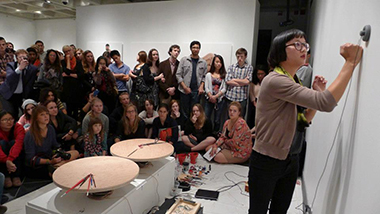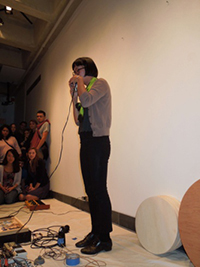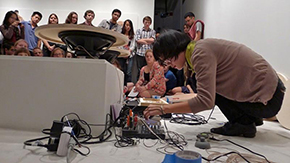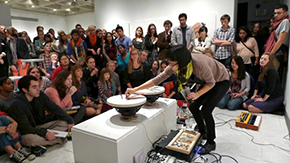In this essay, we propose that the Deleuzoguattarian rhizome offers a map and metaphor for the field of disability studies, especially as it develops outside the boundaries of a defined program or curriculum. As an example of rhizomatic growth, we discuss a series of events in the Philadelphia area in fall 2012 that focused on disability studies and disability arts and culture, including an art exhibition entitled What Can A Body Do? and a scholarly residency sponsored by the Greater Philadelphia Women's Studies Consortium. We suggest that the art gallery offers a generative space for the growth of disability studies, disability aesthetics, and new models of access, and we emphasize the importance of cross-institutional collaboration in the development of disability studies not only as a field but as a field of energy.
Introduction
A rhizome has no beginning or end; it is always in the middle, between things, interbeing, intermezzo. The tree is filiation, but the rhizome is alliance, uniquely alliance. The tree imposes the verb "to be," but the fabric of the rhizome is the conjunction, and… and … and …
Gilles Deleuze and Félix Guattari, A Thousand Plateaus
What does it mean to develop rhizomatically? Botanically speaking, a rhizome is an underground plant stem that grows horizontally, producing roots and shoots from its nodes. Ginger, bamboo, and irises are rhizomes. Deleuze and Guattari contrast rhizomatic growth with arborescent growth: a model based on roots, trees, branches, linear and vertical development. Their philosophical concept of the rhizome, both distinct from and linked to the biological one, has itself traveled in non-linear ways, finding alliance with varied disciplines, modes of thought, and artistic practices. A number of scholars have found the Deleuzoguattarian toolbox useful for disability studies. As Margrit Shildrick observes, "the Deleuzian canon makes no specific reference to disability, but it scarcely needs to … the complex and never fixed interconnectivity that may overtly characterize a mode of life recognizable to disabled people encompasses, as Deleuze and Guattari understand it, every one of us" (165). Petra Kuppers mobilizes the rhizome to open up new ways of approaching disabled ways of living, disability as a word and concept, and disability poetry. She offers a "rhizomatic model of disability that can hold a wide variety of experiences and structured positions in moments of precarious productive imbalance" (93). Dan Goodley draws on the rhizome to imagine socially just pedagogies that engage learners with disabilities. In this essay, we propose that the Deleuzoguattarian rhizome also offers a map and metaphor for the field of disability studies, especially, but not only, its development outside the boundaries of a defined program or curriculum. The language of field, as opposed to that of discipline, department or program, lends itself to rhizomatic thinking and growth. We work the field with Deleuze and Guattari in mind: "Don't sow! Grow offshoots! Don't be one or multiple, be multiplicities!" (24).
We focus here on a series of projects that first developed through the Greater Philadelphia Women's Studies Consortium (GPWSC) and its annual scholar-in-residence program. A consortium is also a rhizome, one in which varied institutions consort with one another, sharing resources and ideas, often in unpredictable ways. The GPWSC comprises thirteen members, ranging from small private liberal arts colleges such as Haverford to large public universities such as Temple. 1 Each year the consortium brings a high-profile scholar to Philadelphia to give talks and master classes at several member institutions. In 2012 we brought Rosemarie Garland-Thomson, a scholar of women's studies and disability studies. In conjunction with her visit, Haverford College sponsored an art exhibition, curated by Amanda Cachia and entitled What Can A Body Do? in its Cantor Fitzgerald Gallery. During the course of the exhibition, two of the participating artists, Christine Sun Kim and Carmen Papalia, came to Haverford, Bryn Mawr, and Swarthmore Colleges for brief residencies. Concurrently, Ursinus College mounted an exhibition of works from its permanent collection, with a focus on arts access. Many faculty members at consortium schools incorporated the talks, residencies, and exhibitions into their fall courses, most of which were not designated as courses in disability studies. The synergies created by these projects enabled both strategic and serendipitous collaboration and growth.
Although many colleges and universities have no disability studies program as such, disability studies and disability arts and culture nonetheless grow and thrive in the interstices of institutions and through transdisciplinary and cross-institutional alliances. Our modes of growth include collaboration, intersection, and juxtaposition, modes that enable our field to retain nimbleness and creative energy even as it becomes, in some locations, more institutionalized. The development of the field is intertwined with an understanding of access as a critical and pedagogical tool and a creative process. The art gallery, we suggest, particularly when it is not "owned" by a specific discipline and is open, in Deleuze and Guattari's terminology, to deterritorialization and reterritorialization, offers a generative space for the growth of disability studies and for new models of access. We ask how those of us engaged in disability studies might make ourselves more visible to one another, both within and across institutions, and we argue for the importance of cross-institutional collaboration as a strategy for developing disability studies not only as a field but as a field of energy.
In our collaborative essay, Kristin will describe Haverford's experience of building alliances and creating multiple points of access to the fall events, Amanda will discuss the conceptual framework of What Can A Body Do? and her curatorial work for the exhibition, and Kelly will focus on GPWSC and Temple University. Together, we hope to illuminate how the interrelated projects in fall 2012 generated multiple offshoots for disability studies. We offer our local experience as a case study in the promises and challenges of developing disability studies in the absence of an institutionally defined program and as an entry point into larger questions for our field. 2
Access and Alliance (Kristin Lindgren)
Perhaps one of the most important characteristics of the rhizome is that it has multiple entryways.
Deleuze and Guattari, A Thousand Plateaus
A couple of summers ago, while preparing to teach Georgina Kleege's Sight Unseen and Rosemarie Garland-Thomson's Staring in my writing seminar, I was chatting casually with a colleague. To my surprise and delight, I learned that he was using both texts in his Visual Studies course. We have since become allies in growing disability studies on our campus. This kind of unexpected and serendipitous encounter is characteristic of our field. One of the challenges for disability studies is to foster conditions under which these encounters, and the alliances that grow out of them, can be sustained and cultivated.
For many years now I have been teaching courses that might be considered disability studies but are not designated as such. Most of these courses, including my fall 2012 seminar Portraits of Disability and Difference, are located in the Writing Program. At Haverford, courses in English, Visual Studies, and History have also incorporated disability studies approaches, and a Computer Science course focuses on assistive technology. This smattering of courses, however, seldom creates any sustained growth or energy around disability studies. In this sense, we miss the structure and vertical curriculum that a program can provide. We have worked instead to create horizontal alliances to bring disability studies programming to campus. Events such as performances, talks, symposia, residencies, and most recently an art exhibition have animated and energized our community, connecting those of us already engaged in disability studies, involving others with no prior interest in the field, and linking all of us with others in the Philadelphia area. In the past decade, Debora Sherman and I have organized a sizable number of these events, both small (an individual speaker or artist) and large (symposia that brought together twenty to forty scholars, artists, activists, and policymakers). We have partnered with the Hurford Center for Arts and Humanities, the Center for Peace and Global Citizenship, the Gender and Sexuality Studies Program, and numerous other Haverford departments and programs, as well as with the members of our Tri-College Consortium (Bryn Mawr and Swarthmore Colleges) and of GPWSC. Disability studies events not only bring compelling art and scholarship to campus but also engage our campus community in imagining, and putting into place, multiple modes of access to the built environment, to visual and digital media, and to the conceptual work of a talk, performance, or exhibition. These events cross boundaries between disciplines and institutions; students, staff and faculty; physical and digital spaces.
I focus here on the fall 2012 events and particularly on our collaboration with the gallery. The Cantor Fitzgerald Gallery, affiliated with Haverford's Hurford Center for Arts and Humanities, is not linked to a particular department or program. Like disability studies, it functions as a transdisciplinary space in which no single mode of thinking takes precedence or claims ownership. Each exhibition begins with the germ of an idea and then develops in multiple directions, spawning related events nurtured by the exhibitions coordinator Matthew Callinan and the gallery's faculty liaison, John Muse. Debora, Matthew, John, and I talked early on about our vision of an exhibition that did not simply provide access but invited visitors to reflect on how we display and describe art and how we move through and experience a gallery space. As an entry point to imagining the exhibition, we organized a symposium in 2011, In/visible: Disability and the Arts, at which five scholars, artists and curators talked about what happens when art, disability, and access bump up against one another. 3 It was our good luck to find, in Amanda Cachia, a curator who was already thinking about these intersections and eager to build an exhibition around them.
As Debora and I write in the foreword to the exhibition catalogue for What Can A Body Do?: "Access involves more than checking off a list of practical accommodations. It is a way of thinking about the world that challenges us to imagine how another body, another self, experiences it… [in this exhibition] access is treated not as an afterthought but as a creative process intrinsic both to art practice and curatorial practice" (3). Indeed, the work itself invites multiple avenues of access and often highlights multisensory experience or sensory translation. In the three pieces from his series Songs Without Words, for example, Joseph Grigely is interested in the "the difference between how sound looks and how sound sounds" (Cachia 9). Christine Sun Kim creates visual representations of sound. Carmen Papalia designed a sound installation documenting his non-visual walking tour. Chun-Shan (Sandie) Yi provided a latex mold of her Dermis Leather Footwear that could be squeezed and manipulated. The curator and gallery staff also incorporated multiple modes of access, both drawing on and expanding those outlined in the Smithsonian Guidelines for Accessible Exhibition Design. 4 The exhibition catalogue includes a CD with audio versions of all the catalogue text; the exhibition website provides audio links to the catalogue essays and artists' bios as well as audio descriptions of the work written and recorded by the artists and Haverford students. These descriptions were also available via iPod in the gallery. But what do all these points of access and entry actually do?
I walked through the exhibition more than a dozen times, in the company of students, friends, colleagues, and visitors. In November I visited with Dan Simpson, a poet who participated in a reading from the anthology Beauty is A Verb, one of many events planned concurrently with the exhibition. Dan is blind, so I asked him if he'd be willing to try out the audio descriptions on the iPod. He listened to two descriptions of Alison O'Daniel's God's Eye, and then, extrapolating from these, described the piece to me. He noted, for example, that the colored pieces of yarn from which the piece hangs emerge from the bottom in braided strands, as if the box were a braiding machine. I could see both the individual strands at the top and the braided strands at the bottom, but I hadn't observed any relation between them. Now I saw the whole piece as a machine, a Deleuzoguattarian assemblage produced by our collaborative interactions with it. Dan's primary experience of the work was auditory, while mine was visual, but together we were able to imagine the piece in a way that drew on both modalities and created something new. One of the initial aims of the exhibition was to highlight the range of embodied perspectives we bring to making, experiencing, and interpreting art. Only by encountering the work in this show repeatedly, however, with many different visitors, did I grasp how distinctively each of us would take in the gallery's sights, sounds, and textures, and how our sensorial perceptions might interact.
The exhibition offered many entry points for Haverford students. My first-year students wrote collaborative, multisensory descriptions of the work in the show, and several chose to do final projects focusing on the exhibition. The gallery's student staff and exhibition interns, led by Aubree Penney and Michael Rushmore, wrote and recorded audio descriptions of each piece. Most of the gallery staff brought to this task a strong interest in visual art but no previous engagement with disability studies. Indeed, some were skeptical that an exhibition focused on disability would be aesthetically and conceptually compelling. Producing an audio description, however, enabled each student to engage intimately with the work of one of the artists and with the exhibition as a whole. We began by discussing examples of audio description from the 2005 exhibition Blind at the Museum and the organization Art Beyond Sight. 5 Repurposing the philosopher Thomas Nagels's phrase "the view from nowhere," we worked against the notion of a seemingly objective and univocal "voice from nowhere." In class, collaboratively written descriptions enabled us to incorporate multiple perspectives. In order to model this multivocal approach in the exhibition, we included more than one description of each work, generally one written and recorded by a student and one by the artist, on the website and iPods. Their varied and unique voices, sensibilities, and styles make for richly textured descriptions. 6
If I were to list outcomes—the antithesis of a Deleuzoguattarian approach—I would include a commitment by the gallery to creating audio description for every future exhibition and the decision by one of the students to attend a graduate program in museum studies with the intention of focusing on arts access. But the notion of outcomes is too static to represent the deeper work of opening the writers of the descriptions, and those who listened to them, to multiple entryways to the exhibition. Audio description travels rhizomatically, bringing disability into conversation with multisensory experience, the literary practices of close reading and ekphrasis, and gallery protocols. It moves into and brushes up against spaces that have no apparent relation to disability.
Haverford, Bryn Mawr, and Swarthmore students also had the opportunity to work directly with artists Christine Sun Kim and Carmen Papalia through the Mellon Tri-College Creative Residencies Program. Carmen led my students on his Blind Field Shuttle, a nonvisual walking tour that involved navigating the familiar terrain of the Haverford campus using unfamiliar modes of orientation. His work is performance-based social practice and thus quite distinct from simulation exercises; the Shuttle is intended not as a simulation of blindness but as an experiential, multisensory practice of exploring the physical environment. Eyes closed, one hand on the shoulder of the person in front of us and the other grasping the air for tactile clues, we moved as one winding organism, passing information down the line through touch and voice. Occasionally the organism broke apart, hand slipping off of shoulder, a disorienting, generative rupture. The texture of the ground beneath us—grass, gravel, pavement, cobblestone—became a source of information and orientation. The warmth of the early December sun, the sudden chill as the sun was blocked by a wall or a building, the flicker of light and dark, noticeable even with eyes closed, helped us to locate ourselves in space. The whirring of heating condensers signaled that we were near a building. Gnarly tree limbs, rough stone faces on a sculpture, the predictable geometry of a chain-link fence: all provided clues in this new landscape. We were still inexperienced in navigating by these compass points, however, so most of us had no idea where in the world we were. Viewing photos of the walk later, I found myself saying: "We walked by the observatory! We ducked under that strange tree!" An uncanny experience, both familiar and unfamiliar, Carmen's walk took us out of our habitual, vision-centered ways of orienting ourselves. Beginners, we were learning new modes of sensory experience, novel ways of mapping and experiencing our campus.
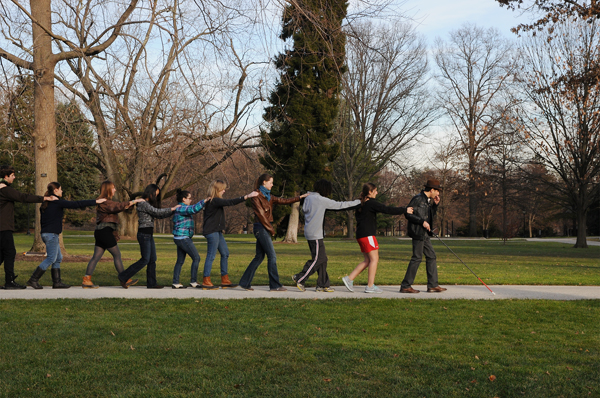
Figure 1 shows Carmen, with his signature brown derby, black leather jacket, and white-tipped cane, leading a line of students along a sidewalk bounded by grass on both sides. One of the nine students is wearing red and white gym shorts and another sports a turquoise plaid jacket. Each student is holding onto the shoulder of the person in front of her, and they appear to be walking at a smooth, rapid pace. In the background are several leafless trees and a large pine tree set against a pale blue winter sky.
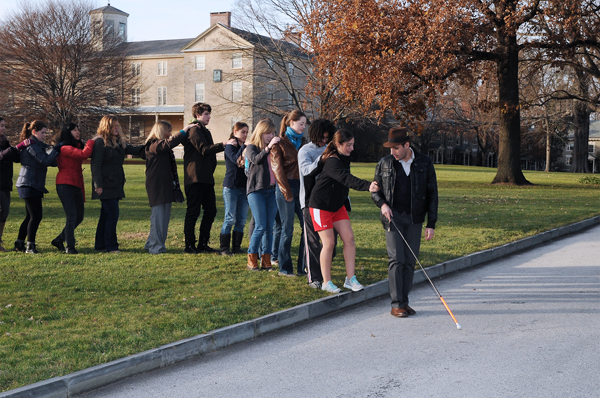
Figure 2 shows Carmen leading the same group of students from a large grassy area over a curb and onto a road. The student directly behind Carmen is feeling with her foot to find the curb and looking a bit tentative. The students behind her have stopped to wait as she navigates the curb. In the background is Founders Hall, a large fieldstone building lit by late afternoon sun, and two large trees, one already leafless and one with golden brown leaves.

Figure 3 shows Carmen in the foreground, his right hand holding his black, red, and white-tipped cane at a sharp angle, his left hand, fingers spread, touching a rough stone sculpture about 6 feet tall and 3 feet in diameter. Carved into the stone are faces of various sizes and shapes, some human and some monstrous; the stone is partly in sunlight and partly in shadow. The students are circling the sculpture, left arms outstretched to touch it. Tree trunks and leaves are visible in the background, and the ground is covered by mulch.
Figures 1, 2 & 3. Carmen Papalia leading his Blind Field Shuttle on the Haverford College campus, December 6, 2012. Photo credits: Lisa Boughter.
Carmen's walk enabled moments of disorientation and reorientation that are characteristic of the generative potential of disability studies. Like audio description, it gave us a new way to enter a familiar space. The growth of our field demands multiple entryways: through the art gallery and performance stage, through multisensory experience and cross-sensory translation, through disciplinary modes of thinking and theoretical innovation, through mentoring and creative collaboration. Finding one's way often involves disorientation, but it also produces what Kuppers calls "precarious productive imbalance" (93). Productive imbalance, as well as rhizomatic alliance and multiple modes of access, may be defining features of disability studies.
Exhibiting Attitudes: Grappling with a Disabled Identity in Curatorial Spaces (Amanda Cachia)
We know nothing about a body until we know what it can do.
Deleuze and Guattari, A Thousand Plateaus
In this section, I reflect on how the content of the exhibition What Can a Body Do? destabilized the gallery space and its relationship to the disabled subject. How do artists and curators (like myself) play a role in the growth of disability studies? How do the artists themselves negotiate their relationship to disability in the context of this exhibition?
One important way to alter reductive perceptions of disability is by engaging with exhibitions that explore disability as a critical theme. Traditionally, disability issues in the museum or gallery are limited to providing access. Many do so by offering programs for patrons who are blind, deaf, or use wheelchairs for mobility. But this preoccupation with access, though important, has ironically obscured the possibility of disability-related content within exhibitions and other curatorial practices. Hence, my exhibition attempted to narrow the question originally posed by Deleuze into: "what can a disabled body do?" Nine contemporary artists participated in the exhibition: Joseph Grigely, Christine Sun Kim, Park McArthur, Alison O'Daniel, Carmen Papalia, Laura Swanson, Chun-Shan (Sandie) Yi, Corban Walker and Artur Zmijewski. Each one demonstrated new possibilities for the disabled body across a range of media by exploring bodily configurations in figurative and abstract forms. In the catalogue essay I ask: "What does it mean to inscribe a contemporary work of art with experiences of disability? What shapes or forms can these inscriptions take? How, precisely, can perceptions of the disabled body be liberated from binary classifications such as "normal" versus "deviant" or "ability" versus "disability" that themselves delimit bodies and constrain action? What alternative frameworks can be employed by scholars, curators, and artists in order to determine a new fate for the often stigmatized disabled identity? … It is important to think about what disability does rather than simply what it is. Such reframing breaks binary constructs as it is focused on a type of concretized being-in-the-world, on the truths of living inside a disabled body" (5).
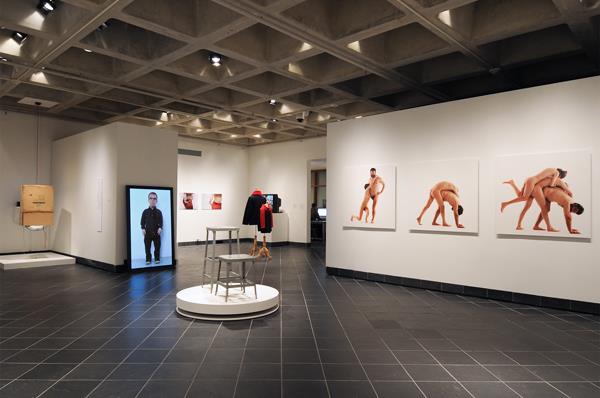
Figure 4. What Can a Body Do?, Cantor Fitzgerald Gallery, Haverford College, PA,
October 26 — December 16, 2012. Photo credit: Lisa Boughter.
Figure 4 is an installation shot from the What Can a Body Do? exhibition at Haverford College, PA. The shot shows a variety of works ranging from sculpture to photographs and video installations. The two-dimensional images are hung on the white walls of the gallery space, while the three-dimensional sculptures sit on white pedestals throughout the space. From left to right, first, Alison O'Daniel's God's Eye, composed of a cardboard box suspended from the ceiling; Corban Walker's TV Man, a larger-than-life flat-screen television displaying a full-size portrait of Walker's four-foot body; Laura Swanson's Display: Stools – grey stools sitting on a rotating circular white platform in the foreground and her Display: Clothes (dark coats and red scarves placed on free-standing dress forms) behind these; in the far background, several photographs by Chun-Shan (Sandie) Yi on the wall to the left of the dress forms; and finally Artur Zmijewski's three photographs are prominent along the wall to the right of the installation shot. These photos show nude men and women standing against a white background. One man is an amputee, and he enters into various bodily compositions with the other bodies in order to see and think about his body in alternative ways in contrast to the others.
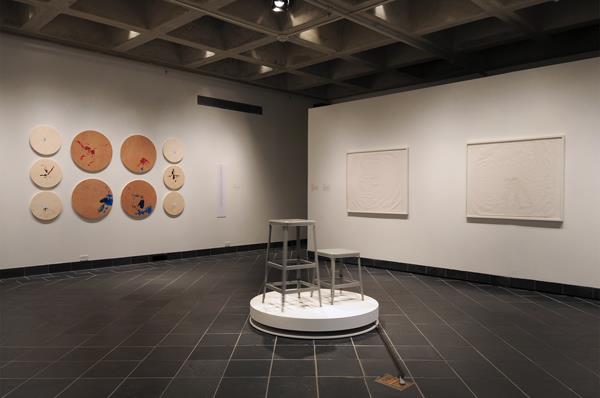
Figure 5. What Can a Body Do?, Photo credit: Lisa Boughter.
Figure 5 is a second installation shot. In the center of this shot, Laura Swanson's Display: Stools appear once again, although one might discern the movement of the stools on her rotating platform better in this photograph, as the stool legs look slightly blurred. To the left of the stools are Christine Sun Kim's Speaker drawings #1-10 hung on the wall, composed of round wooden boards of two sizes, which contain colorful paint drip markings from her performance at the opening reception. To the right of the stools are three large drawings hung on the wall, also by Christine Sun Kim. Entitled Etudes #1-3, these are notational elements drawn with black ink onto large white sheets of paper. In this installation shot, it is hard to see any detail on the drawings.
While I perceive this show, as well as my earlier exhibition Medusa's Mirror: Fears, Spells, and Other Transfixed Positions, as just the beginning of what I believe can be successful ventures into curatorial work involving disability, I have encountered resistance to the category by many artists. 7 Some are unsure whether they wish to be associated with a label that has traditionally been limiting for their practices given the persistent, reductive perception of disability.
Numerous participating artists had questions about my approach to language and the textual framing I created through didactic labels, wall texts and catalogue essays. The big question was whether the word disability was going to be included in the title to the show, and whether the show was going to be marketed as "the disability show." In the end, disability was not used in the title, but confronting social constructions of disability was the core project of this exhibition, and the physical impairments of each artist were discussed in relation to the art itself.
The artists' concerns reflect larger issues around the category of disability art. British artist Aaron Williamson writes, "the idea that disability comes lowest in the pecking order of identity communities is reflected in disability art's standing as a critical category." One of the participating artists, Carmen Papalia, blames this attitude on some disability-arts-based organizations that have limited, inward-looking vision statements driving their missions. While these organizations were important in establishing support systems to allow participation in art-making activities by disabled artists, they also "fail in bringing artists with disabilities into dialogue with the world of mainstream contemporary art" (9). Papalia indicates that due to these limiting frameworks in the discourse around token identity groups, artists of their ilk have been unable to contribute much to the art world, or even to be taken seriously. Officially sanctioned "disability art" then, is funded only for its uncritical, unchallenging nature, for its empowering "celebration" of a minority identity (Williamson).
Sometimes I have had to articulate my own position or relationship with disability to gain the respect and the trust of the artists I've been working with in the past few years. I venture into thinking that if I am seen as a curator who intimately understands disability because I identify, I am an "insider" and will not allow patronizing tones to seep into my projects. Admittedly, while I believe in how empowered one can be by embracing disability, I am also concerned with wanting to avoid any ghettoization that may occur from my association with it as a curator as well as the potential ghettoization of my curated artists. What happens if we think of this challenge as the opportunity to articulate a richer and more complex language or contemplate an experience of disability? As a curator who just happens to have dwarfism, who works with artists who may or may not have disabilities or identify, I must take great care to note the intersectional specificities of their gendered, cultural, racial and generational contexts and avoid the reduction that I work against in my curatorial practice.
Ultimately artists with disabilities have a desire to set the terms of their individual practices. Christine Sun Kim, who presented a sound performance at the opening reception, described her reaction to the show's concept this way:
That idea of disability I was a little resistant to. I look at my work not as a disabled artist but just as an artist. The word disability carries a lot of stigma with it. But I liked how [Amanda] wanted to go and push herself into a space where…kind of reframing people with disabilities or disabled artists. I didn't want to be pigeon-holed but I felt willing, after speaking with her, to go with her with this vision and to see where this went. 8
Kim's spellbinding performance was composed of her voice-box — screaming (or screeching?), blowing, whimpering and murmuring into a microphone, and also from sounds she created using various objects around her, such as her fist banging on the wall, swinging and sliding a microphone through the air and along the ground and the tick-tocks from a metronome. (see figs. 6-9)
Figures 6-9. What Can a Body Do?, Photographs by Lisa Boughter, Amanda Cachia and John Muse. (Click on images to enlarge.)
Figures 6-9 show Christine Sun Kim in various stages of her performance at the opening reception for What Can a Body Do? at Cantor Fitzgerald Gallery. She is set up with several pieces of audio equipment, subwoofers, paint, paint brushes, other sound objects like a metronome and microphone, and many people, young and old, surround her and these objects as she engages with them. Christine wears black pants, a beige sweater and a green scarf. From left to right, top to bottom, in the first image Christine stands as she pounds her fist on the wall in order to generate vibrations into her sound equipment; in the second image Christine makes loud noise with her voice as she holds the microphone closely to her mouth; in the third image Christine is kneeling over her sound equipment placed on the ground as she plays with various cords, wires and controls; in the fourth and final image, Christine is bending over her two wooden boards placed on top of two subwoofers as she places paint brushes on top of one of the boards.
Speaker drawings #1-#10 (2012) were then created from the ink and powder-drenched quills, nails and cogs that danced across round wood boards to the vibrations of subwoofers and speakers beneath that responded to Sun Kim's sounds. The ten wood board Speaker drawings were hung on the walls of the gallery space after Kim's performance (see figs. 10 & 11). Along with drumhead, subwoofers, paper, objects, and wet materials, the end results come out as physical and visual records of sounds. She combines these various systems in an attempt to open up a new space of authority/ownership over sound and rearrange hierarchies of information.
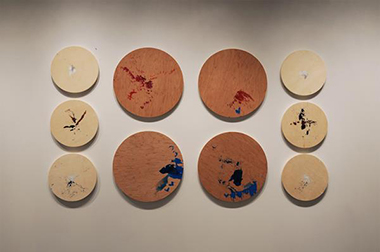
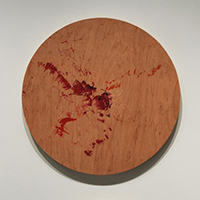
Figure 10-11. Speaker Drawings #1-10 by Christine Sun Kim (on left) and detail of one of the Speaker Drawings (on right), Photo credits: Lisa Boughter. (Click on images to enlarge.)
Figure 10 shows all ten of Christine's Speaker Drawings hung on the white wall. They are all round-shaped wooden boards, although the six smaller boards are a different type and color of wood than the four larger boards. The surface of the boards reveal scattered, abstract smears of colorful paint drips across their surfaces, creating random patterns and designs. Prominent ink colors include white, grey, red, blue and black. The boards are lined up so that the six small boards form vertical rows of three boards each, framing the left and right sides of the four large boards in the center. The large boards form two rows of two boards each, so that the overall arrangement is equally spaced and looks like one large rectangular shape hanging on the wall.
Figure 11 shows one of the large wood boards in detail. This one shows red smears of paint across the surface, and the detail indicates that the paint was applied by repeated dabs from a small paintbrush, starting from the center of the board and moving out in multi-directional lines.
Artists with disabilities, including many of the participating artists in What Can a Body Do? may question and re-define culture, environment and "normative" practices through the lens of disability. Work by these artists deserves to be placed within a general field of art practice so as to integrate the emergent discourse of complex embodiment with critical art and disability studies discourse. This work also begins to address an entrenched bias in the art world towards visual culture and towards vision as the dominant mode of experiencing art in the museum context. What would happen if galleries and museum began to think of themselves as institutions for "sensorial culture" rather than purely "visual culture?" As participating artist Carmen Papalia says about his sound-based work from the exhibition, "I consider [my work] (non-visual or otherwise) as contributing to a productive model for accessibility — where people of all abilities can recognize the many entry-points to experience, and can consider each entry-point a relevant (and valuable) way of being." 9
While the art gallery is a powerful incubator for radical, activist ideas in relation to disability, the complex reactions by artists in this exhibition point to how they are still attempting to define (or undefine) themselves as they negotiate their relationship to disability within the art world amidst lingering stigma and ableism. Their affective responses to participation, passing, identity, labels and ambiguity also point to the evolution of the field of disability studies itself, as it continues to define itself in a time of complex intersectional politics and hybrid identities. The museum's "turn" towards disability in exhibitions like What Can a Body Do? opens new directions for disability studies through both disability-related content and multimodal perspectives. 10 Initiating conversations about how art about disability moves us and why it matters, museums and galleries form part of the rhizome that is disability studies.
Fields Without Programs (Kelly C. George)
Any point of a rhizome can be connected to anything other, and must be.
Deleuze and Guattari, A Thousand Plateaus
"Where are all the people who do disability studies research?" Dr. Gilbert asked in frustration. As the director of the Greater Philadelphia Women's Studies Consortium (GPWSC) and an affiliated faculty member of Temple University's Women's Studies program, Dr. Melissa Gilbert was coordinating Rosemarie Garland-Thomson's visit to the area. At Temple, this entailed securing departmental co-sponsors for a public lecture and master class, but more importantly, it meant finding students and faculty to attend.
Collaborating on a multi-campus scholar-in-residence program involves a further litany of tasks, as I learned from assisting in just a small fraction of these responsibilities. At which schools will the scholar speak? How will the program be promoted? Who will be in the audience? Where are the accessible rooms on each campus? How will the scholar get from school A to school B? And when will she have time to eat?! As I discovered, the complications surrounding some of these tasks get to the heart of issues facing the growth of the field of disability studies.
When Dr. Gilbert asked where all the people doing disability studies research were, I felt my pride shrink at her question; I was a representative of an invisible field. How could I explain to her that the field was out there, if you only knew how to look for it? Deleuze and Guattari might have answered Dr. Gilbert's question about where to find the rhizome that is disability studies by reminding us that "any point of a rhizome can be connected to anything other, and must be" (225)—but that wasn't going to help us find our audience for Garland-Thomson's visit.
When there is a program on campus, organizers can go to the program web site and discover a list of people who "do" whatever it is they are looking for—History, or Geography, or Physics. Not the case with "doing" disability. It's a perennial problem for fields without programs. On the one hand, fields such as disability studies have the destabilizing potential of Deleuzoguattarian bodies without organs—that is, fields without programs might resist the hierarchy and systematic organization suggested by programs. On the other hand, even at Temple University, where our campus is home to a University Center for Excellence in Developmental Disability (UCEDD), faculty members unfamiliar with disability studies seem unable to locate those of us on campus engaged in the field. Interdisciplinary alliances are one way to address this issue. Indeed, as part of reviving Temple's Graduate Certificate in Disability Studies—which was not active at the time of the Consortium events—I have since been charged with chairing an Interdisciplinary Faculty Council on Disability to increase collaboration among those doing disability-related work on campus, inclusive of both practical and academic approaches. Likewise, one of the GPWSC's goals was to give disability studies a platform on campuses that otherwise lacked such opportunities. But I'm not sure the invisibility of disability studies is (merely) due to lack of publicity. In addition to lacking programs, disability studies scholars are also likely to be confused with those engaged primarily in service provision. To reference Raymond Williams—and all Internet searches—if disability studies is a field, what are our keywords (a.k.a., search terms)? And if we don't have any, or if we have only insufficient ones, then how can we be found?
If disability studies is a field, or better still, a field of energy, where does it happen? Disability studies may happen in the classroom, the gallery, or the lecture hall, as we've learned from Kristin's work at Haverford. But it also happens, as Petra Kuppers proposes, in the "unexpected touchings" of keywords (224), and by knowing which keywords will make the "vibration" (223) she says is embedded in Neil Marcus's poetry, in phrases like "disabled country," "disabled food" and "disabled tears" (230). For Kuppers, the term disability lives in the "haptic, smooth space" between words that sit in tension with one another (Deleuze and Guattari 493). These are words that do more work than the binary either/or. Instead, they are the stuff of both/and, and maybe even the co-creative energy of together. (But they're almost never words you would think to use in an Internet search.)
Amanda's show asks provocatively "What Can a Body Do?" and if I had to pick keywords for the GPWSC project as a whole, I might argue that "doing disability" approaches the pleasing vibration Kuppers is looking for.
It's possible that there is flexibility in flying under the radar the way some of us do, listing "disability studies" as a specialization within our home discipline, and not being able to be found by a basic Internet search. Ultimately, the lecture and master class led by Garland-Thomson at Temple was attended by many staff from the Institute on Disabilities, but also by faculty and students of Geography, Communication Studies, English, Art, Religion, Rehabilitation, Education, Psychology, and Women's Studies. The rhizome lives, but how do we make it visible?
The invisibility of disability studies on some college campuses may be a result of the critical ways the field departs from how disability has been treated historically. So much of disability history has entailed the grouping together of disabled people through techniques of surveillance, identification, taxonomy, or as Dan Goodley (2007) warns is true in educational contexts: "over coding" (324). 11 We are, when we are free from a program, perhaps free of that.
I cannot claim any such freedom in my current position at the Institute on Disabilities, where one of the explicitly stated goals of my position is "to develop productive relationships with other colleges and universities in the Commonwealth to promote the growth of the field of Disability Studies." "Field-building" is actually in my job description. It is also in my Performance Development Plan, the online human resources tool designed to monitor and assess employees, and I enter activities related to this job goal into The National Information and Reporting System (NIRS), the online outcome-reporting tool used by all UCEDDs. Over-coded, indeed. And yet, in order for disability studies to be visible, administrators inevitably must negotiate the field's self-definition within such existing structures.
So how is it that my administrative activities at the Institute are so intensely over-coded and yet Dr. Gilbert from Women's Studies doesn't know where to find the people who do disability studies research on campus because in other ways we are so intensely under-coded?
What happens when we host events such as Rosemarie Garland-Thomson's lectures and What Can a Body Do? is that we make ourselves visible both to each other and to the world, but often in ways that fundamentally resist coding.
At What Can a Body Do? scholar-in-residence Rosemarie Garland-Thomson and a group of us who "do" disability chatted in a circle. Dr. Gilbert was among us, having now grown familiar with a few more members of the disability studies rhizome. A young woman approached the group. She quickly thanked Rosemarie, and then she was gone.
"She's at Temple, you know," Rosemarie said, looking my way. "She's in the dance department."
"I'm going to go stop her!" I blurted.
I jogged over to my fellow Owl and introduced myself. She explained that her doctoral thesis was on disability and dance. After five years at Temple, our paths had never crossed. I told her I'd just met another graduate student from a different university in Philadelphia who was hosting a monthly disability studies reading group. I invited her to join me at their next meeting. I asked if she'd be going to the master class with Rosemarie at Temple next week, and wondered if we could have coffee sometime and just talk about our projects.
There was no way to code my meeting with this dance student in my UCEDDs National Information and Reporting System or my University's Performance Development Plan.
Just as an experiment, I tried to find the dance student online using a combination of search terms that had not previously occurred to me. With the right keywords, she appeared. "Dance + Temple University + Disability." Deleuze and Guattari had it right: "…the fabric of the rhizome is the conjunction, and… and … and …"
Cross-institutional collaboration has the potential to destabilize the institutionalization of all fields in the sense that alliances such as the GPWSC operate outside of the authority of any single institution and so necessarily sit in vibrational relationship to the (singular) authority of each. While funding for faculty and academic programs clearly impacts the development of a field, when members of institutions collaborate, they operate outside of "programs," which are owned by institutions in a way that "fields" are not. My participation with GPWSC allowed me to perform "field-building" in the sense that "fields" are constituted not only through the institutional capital conferred by degrees but also by the intellectual capital recognized and valued in less hierarchical, cross-institutional spaces. When no single institution leads a project, the community itself—in this case, the diaspora of disability studies scholars in the Greater Philadelphia Area—generates the event, the audience, the field of energy.
Rhizomorphous Disability Studies
To be rhizomorphous is to produce stems and filaments that seem to be roots… but put them to strange new uses.
Deleuze and Guattari, A Thousand Plateaus
What constitutes a field of inquiry? What shared ground are we working when we say we "work in the same field?" In disability studies, we might say that we explore disability as a category of analysis, a lived experience, and a source of cultural knowledge and production. Or we might generate an entirely different set of parameters. As a field with relatively few programs, we are defined not by the structural elements of jobs, curricula, majors and minors, but rather by the kinds of questions we ask and the methodologies we use. This structural difference means that our modes of growth are different, too. We argue here that disability studies develops in part through horizontal alliance and collaboration, modes that value interdependence and creative, vibrational intersection. It grows, too, through the work of artists and curators who ask questions about disability identity and culture, reimagine the gallery, and explore sensorial as well as visual art. And it grows through a capacious and generous approach to access, one that engages not only its technical aspects but also its intellectual and aesthetic dimensions. We also claim, perhaps counterintuitively, that our field develops through disorientation, defamiliarization, and destabilization. The lived experience of disability includes finding new and multiple ways to enter and imagine familiar spaces; this artful, inventive embrace of multiplicity also characterizes our field of inquiry, our field of energy. Decentered, nomadic, rhizomorphous, we aspire to grow stems but "put them to strange new uses."
Works Cited
- Cachia, Amanda. "What Can A Body Do?" Exhibition Catalogue for What Can A Body Do?, October 26-December 16, 2012. Haverford College, Haverford, PA: John B. Hurford '60 Center for the Arts and Humanities, 2012.
- Deleuze, Gilles, and Félix Guattari. A Thousand Plateaus: Capitalism and Schizophrenia. Trans. Brian Massumi. Minneapolis, MN: University of Minnesota Press, 1987.
- Goodley, Dan. "Towards Socially Just Pedagogies: Deleuzoguattarian Critical Disability Studies. International Journal of Inclusive Education Vol 11, no. 3, May 2007: 317-334.
- Kuppers, Petra. Disability Culture and Community Performance: Find a Strange and Twisted Shape. New York: Palgrave MacMillan, 2011.
- Lindgren, Kristin, and Debora Sherman. Foreword. Exhibition Catalogue for What Can A Body Do?, October 26-December 16, 2012. Haverford College, Haverford, PA: John B. Hurford' 60 Center for the Arts and Humanities, 2012.
- Papalia, Carmen, "Cutting the Disability Out of Disability Arts." Portland State University, 2011.
- Shildrick, Margit. Dangerous Discourses of Disability, Subjectivity, and Sexuality. New York: Palgrave MacMillan, 2009.
- Williamson, Aaron. "In the Ghetto? A Polemic in Place of an Editorial." Special Issue, ed. Aaron Williamson, Parallel Lines, March 2012. http://www.parallellinesjournal.com/
Endnotes
- For more information about GPWSC, see their website: http://gpwsc0.wix.com/gpwsc.
Return to Text - Among the GPWSC member institutions, only the University of Delaware and Temple University offer programs in disability studies. During the GPWSC events of fall 2012, Temple's program was being restructured; it was re-launched in 2013.
Return to Text - Invited participants were Tobin Siebers, Georgina Kleege, Katherine Sherwood, Ann Fox, and Jessica Cooley.
Return to Text - The Smithsonian document can be accessed at http://accessible.si.edu/pdf/Smithsonian%20Guidelines%20for%20accessible%20design.pdf.
Return to Text - Blind at the Museum was curated by Katherine Sherwood and Beth Dungan and mounted at the Berkeley Art Museum. Audio description of work in the exhibition is available at www.blindatthemuseum.com. Guidelines for writing audio description and numerous examples are available on the Art Beyond Sight website: www.artbeyondsight.org.
Return to Text - These descriptions, along with catalog images, text and audio, are available on the What Can A Body Do? website: http://exhibits.haverford.edu/whatcanabodydo/.
Return to Text - To learn more about Medusa's Mirror: Fears, Spells and Other Transfixed Positions, please visit http://proartsgallery.org/exhibitions/2011_medusa.php.
Return to Text - http://www.youtube.com/watch?v=Ivcf2YCedtE. Interview with Christine Sun Kim and Amanda Cachia. Recorded by Haverford College, PA on October 25 and 26, 2013.
Return to Text - Carmen Papalia artist statement, 2012.
Return to Text - Mara Mills, Asst. Professor in the Media, Culture, and Communication Dept. at NYU, said of the exhibition, "it's one of the best models I can think of for arts inclusion/multimodal spectatorship." Email message to the author, Dec. 26, 2012.
Return to Text - Cachia: Indeed, well-known British artist Ryan Gander cited this history as the reason he didn't want his work to appear in What Can a Body Do? In an email dated November 17, 2011, he stated, "Sorry I can't do this show, I strongly disagree with the grouping of artists with disabilities, but thanks for the invitation and good luck with it." Among subsequent email exchanges, on November 18, 2011, he wrote, "Your show… does group disabled people together, something in the history of the world, in all sorts and parts of society, humans have again and again fought to make sure isn't forced. I'm not a disabled artist, I'm an artist that happens to use a wheelchair, in the same way I use glasses, or a car or a cup."
Return to Text

